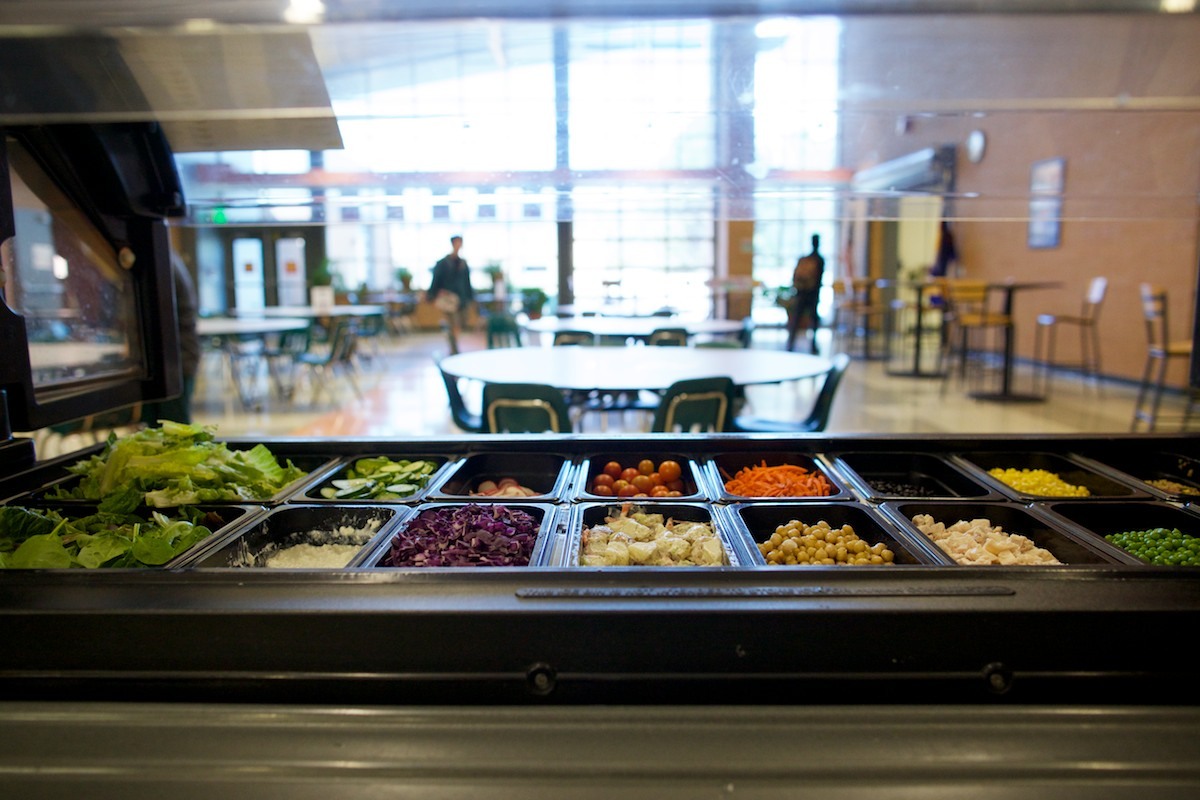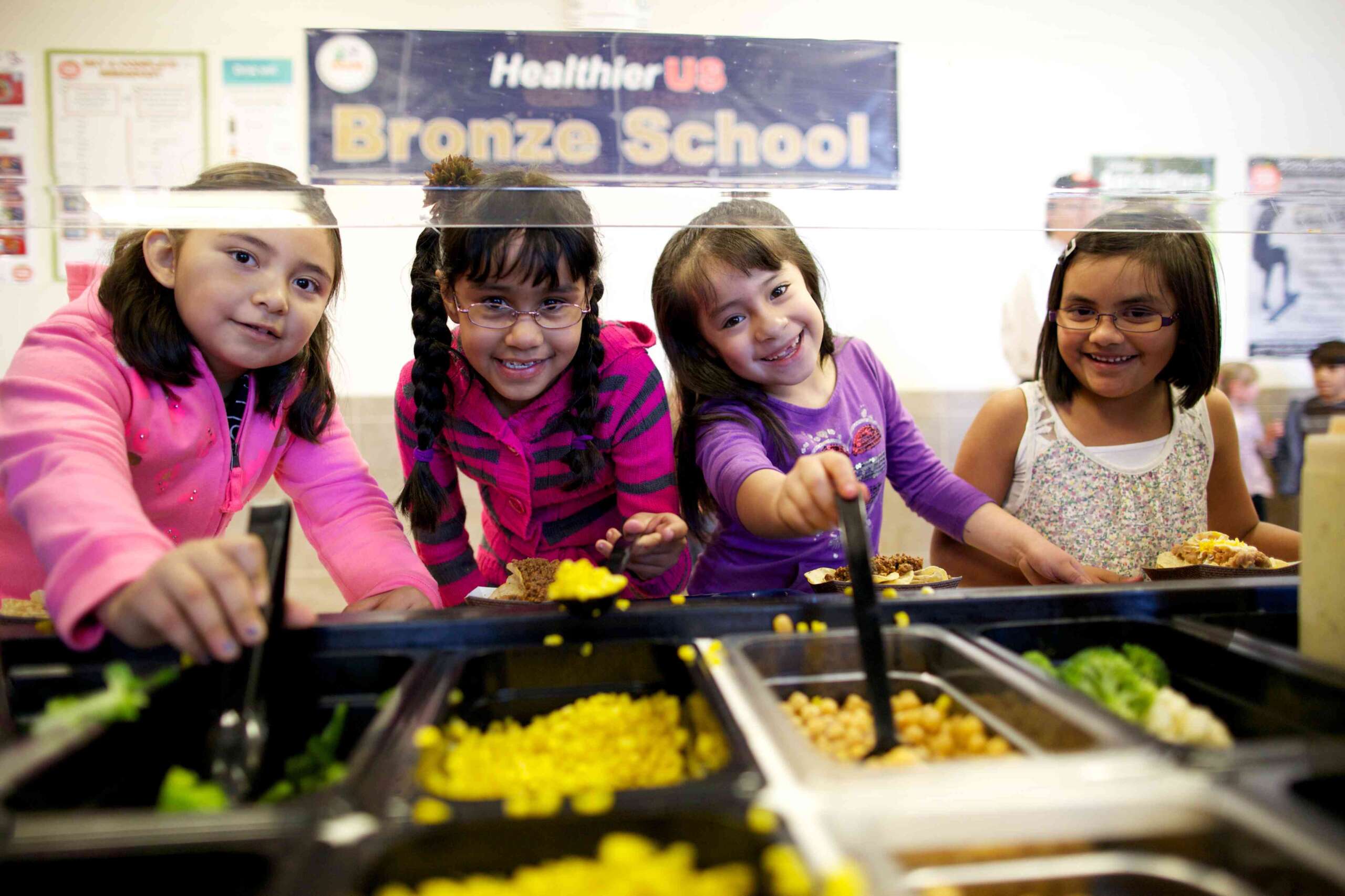
Salad Bar Training Tips
June 16, 2023 | By Allison Johnson
Salad Bars represent a significant service model shift for any district. Read on to learn useful salad bar training tips!
For most school districts, adding a salad bar means that the service line will continue from the hot food line into the cafeteria. The point of sale might also move, since it must be placed after the salad bar. These are significant shifts in the school site team’s daily routine and require practice to master. Budgeting time and funds for staff training is an important part of the process. Read on to learn how districts can best train their staff to operate salad bars effectively!
Setting Up for Success
Salad bar operating plans should be developed for central kitchen and/or satellite or stand-alone kitchens as applicable. Standard Operating Procedures (SOPs) that include salad bars as part of the menu and service are essential to a district’s success. SOPs can be customized to fit various physical plants and labor models, but the overall goals are the same: to operate the bar efficiently and safely. Procedures should include guidelines for purchasing, receiving, storing, rinsing, processing, holding, transporting, temperature logging, and serving of fresh produce, with specific guidelines for the handling of temperature controlled for safety (TCS) and Potentially Hazardous Foods (PHF).
Dedicated professional development days or half days are ideal for group trainings. Many districts roll out a salad bar at one site until it is running smoothly, and then use that school as a training location for the subsequent school team. Whether the director performs a group training or uses the first launch site for on-going and subsequent training, an outline of salad bar training that aligns with individual district set up can be very helpful. Short “refresher” trainings can also be developed and performed annually as part of the Professional Standards training hour requirements.
The Importance of Staff Trainings
Staff, as well as volunteers and regular lunchroom supervisors (e.g. vice principals, aides, teachers), are important to the overall follow-through of salad bar procedures. By educating them on proper use of the salad bar, you can ensure long-term success of the program. Marketing posters and signs can educate students, and be doubly helpful in unison with a trained support team. Community acceptance of the salad bar will happen once everyone experiences the students’ excitement and delight in having more fresh food choices.


The Importance of Staff Trainings
Staff, as well as volunteers and regular lunchroom supervisors (e.g. vice principals, aides, teachers), are important to the overall follow-through of salad bar procedures. By educating them on proper use of the salad bar, you can ensure long-term success of the program. Marketing posters and signs can educate students, and be doubly helpful in unison with a trained support team. Community acceptance of the salad bar will happen once everyone experiences the students’ excitement and delight in having more fresh food choices.

Engaging Students in Lunchroom Education
Engaging students with the new salad bar can be the most rewarding part of the whole process. While having more choices is exciting, some students may be overwhelmed. To help students ease into the experience, you should create clear guidelines for student participation from the beginning. We recommend preparing students by offering samples and educating them about salad bar etiquette. Lunchroom Education activities, such as Rainbow Days, are great ways to get students engaged with the salad bar.

Engaging Students in Lunchroom Education
Engaging students with the new salad bar can be the most rewarding part of the whole process. While having more choices is exciting, some students may be overwhelmed. To help students ease into the experience, you should create clear guidelines for student participation from the beginning. We recommend preparing students by offering samples and educating them about salad bar etiquette. Lunchroom Education activities, such as Rainbow Days, are great ways to get students engaged with the salad bar.
Food safety concerns can derail a salad bar launch, but we know from thousands of successful operations across the country that salad bars can be completely clean and safe. Minimizing risk through student education is imperative. When the hotline doesn’t offer vegetables or fruits, students must understand that the salad bar is a required part of their meal. Use signs to illustrate and train students about portion size and choice. Menu boards and visual aids on/near the salad bar are helpful reminders as the students are waiting in line. See some great student training resources below.
Fresh Resources
Staff Training Videos & Presentations
- Chef Ann Foundation- Salad Bar Implementation Video
- Fairfax County Public Schools- Salad Bar Live Demo Training Video
- Bridgeton Public Schools – Salad Bar Introduction for Teachers and Staff PowerPoint Presentation
Posters and Signs
- The Lunch Box – Posters and Signs
- Napa Valley Schools –1/2 Cup Portion Size Poster
- Wellness in the Schools – Vegetable Education Signs
- Center for Ecoliteracy- Taste Test Poster
Student Training Videos & Classroom Lessons
- San Diego USD –Salad Bar Video
- Bridgeton Public Schools-Salad Bar Rules
- Hurst-Euless-Bedford ISD – Healthy School Lunch & How to use a School Salad Bar
- Bridgeton Public Schools- Introducing- The Salad Bar
Salad Bar Implementation Resources
- Salad Bars Guide
- The Lunch Box: Salad Bars
- Salad Bars to Schools – an online course from CAF’s School Food Institute
Click here to explore more resources and learn how you can get a salad bar in your school!





